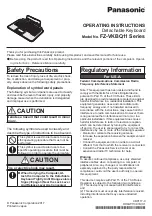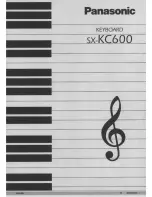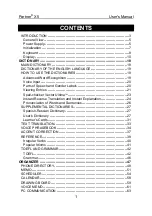
88
Chapter 7: Advanced Technique for Mixing
Digital input from an external device
The DIGITAL IN jack on the rear panel of the DPS16 enables you to route digital audio signals output from the
digital output jacks of a connected DAT or MD recorder, CD player, or sampler into the DPS16. In this example,
we will record digital audio signals output from a connected DAT recorder onto tracks 1 and 2 of the DPS16.
➸
NOTE :
To transfer digital audio signals between multiple digital devices, you must set the sampling
frequency and bit resolution of each device to the same values. Therefore, if you wish to record an external
digital source on the DPS16, you must use the sampling frequency and bit resolution used by the digital
source when you create a new Project. (For more information, refer to “Creating a new Project” on page
112.) Refer to the following table for the sampling frequency and bit resolution used by the main digital
devices.
Sampling frequency
Bit resolution
DAT recorder
32kHz, 44.1kHz, 48kHz
16 bit
MD recorder
44.1kHz
16 bit
CD player
44.1kHz
16 bit
1. Connect the digital output jack of the DAT recorder and the DIGITAL IN jack of the DPS16 using an
optional coaxial cable.
✐
TIP :
Use a dedicated digital audio coaxial cable for connection. If the digital output jack of the DAT
recorder is optical, you will need to use an optical/coaxial converter.
2. Create a new Project that uses the sampling frequency and bit resolution of the DAT tape.
3. While the Main screen is displayed, press the [F4] (
SELECT
) key, then turn the [JOG] wheel to select
SYNC/CLOCK as a Q-Link Function.
4. Press the [F3] key and set the DIGITAL CLOCK parameter of the SYNC/CLOCK function to “
DIGI IN
”.
When the DIGITAL CLOCK parameter is set to “
DIGI IN
”, the internal clock of the DPS16 synchronizes to
the digital clock information included in the incoming digital signal.
➸
NOTES:
• If the DPS16 does not lock to the digital input signal, dropouts or click noise may occur.
• When DIGI IN is selected, the DPS16 functions referenced to the incoming digital signal. If the sampling
frequency setting of the project differs from that of digital input signal, the time counter may not work accu-
rately. Also, after recording, the recorded material may be played back in a wrong pitch under INT setting or
when the digital input of different sampling frequency is used.
To prevent these problems, we recommend to set INT when the sampling frequency of recording signal is
different from that of the project.
✐
TIP:
When an error in synchronizing to the incoming digital clock is detected, the error message “Digital
clock unlocked.” will be displayed. Although it continues to record, the recorded material may not be played
back correctly. Therefore, we recommend to play it back and confirm the proper recording.
5. Press the [PATCH] key to return to Quick Patch mode.
















































